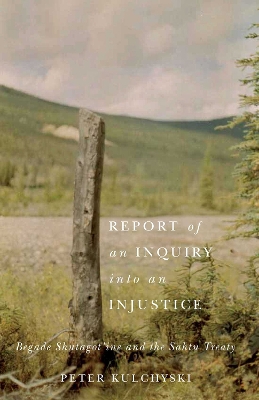Contemporary Studies on the North
2 total works
Part ethnography, part narrative, Like the Sound of a Drum is evocative, confrontational, and poetic. For many years, Peter Kulchyski has travelled to the north, where he has sat in on community meetings, interviewed elders and Aboriginal politicians, and participated in daily life.
In Like the Sound of a Drum he looks as three northern communities - Fort Simpson and Fort Good Hope in Denendeh and Pangnirtung in Nunavut - and their strategies for maintaining their political and cultural independence. In the face of overwhelming odds, communities such as these have shown remarkable resources for creative resistance. In the process, they are changing the concept of democracy as it is practised in Canada.
In Like the Sound of a Drum he looks as three northern communities - Fort Simpson and Fort Good Hope in Denendeh and Pangnirtung in Nunavut - and their strategies for maintaining their political and cultural independence. In the face of overwhelming odds, communities such as these have shown remarkable resources for creative resistance. In the process, they are changing the concept of democracy as it is practised in Canada.
A Report of an Inquiry into an Injustice chronicles Peter Kulchyski's experiences with the Begade Shuhtagot'ine, a small community of a few hundred people living in and around Tulita (formerly Fort Norman), on the Mackenzie River in the heart of Canada's Northwest Territories. Despite their formal objections and boycott of the agreement, the band and their lands were included in the Sahtu treaty, a modern comprehensive land claims agreement negotiated between the Government of Canada and the Sahtu Tribal Council, representing Dene and Metis peoples of the region. While both Treaty Eleven (1921) and the Sahtu Treaty (1994) purport to extinguish Begade Shuhtagot'ine Aboriginal title, oral history and documented attempts to exclude themselves from treaty strongly challenge the validity of that extinguishment.
Structured as a series of briefs to an inquiry into the Begade Shutagot'ine's claim, this manuscript documents the negotiation and implementation of the Sahtu treaty and amasses evidence of historical and continued presence and land use to make eminently clear that the Begade Shuhtagot'ine are the continued owners of the land by law: they have not extinguished title to their traditional territories; they continue to exercise their customs, practices, and traditions on those territories; and they have a fundamental right to be consulted on, and refuse or be compensated for, development projects on those territories. Kulchyski bears eloquent witness to the Begade Shuhtagot'ine people's two-decade struggle for land rights, which have been blatantly ignored by federal and territorial authorities for too long.
Structured as a series of briefs to an inquiry into the Begade Shutagot'ine's claim, this manuscript documents the negotiation and implementation of the Sahtu treaty and amasses evidence of historical and continued presence and land use to make eminently clear that the Begade Shuhtagot'ine are the continued owners of the land by law: they have not extinguished title to their traditional territories; they continue to exercise their customs, practices, and traditions on those territories; and they have a fundamental right to be consulted on, and refuse or be compensated for, development projects on those territories. Kulchyski bears eloquent witness to the Begade Shuhtagot'ine people's two-decade struggle for land rights, which have been blatantly ignored by federal and territorial authorities for too long.

